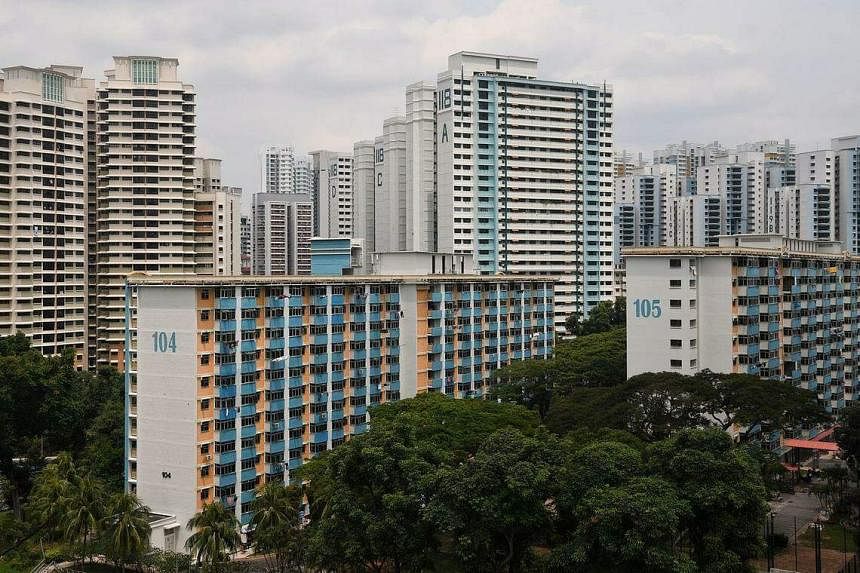SINGAPORE - The Housing Board (HDB) will set aside more temporary housing for families waiting for their new flats, doubling the number of interim rental flats to 4,000 over the next two years.
Announcing this on Monday, Senior Minister of State for National Development Sim Ann said HDB had met its earlier target of increasing the supply of flats under the Parenthood Provisional Housing Scheme (PPHS) from 800 units in 2021 to 1,800 in 2023.
The number of such flats will reach close to 2,000 by the end of 2023, she said, adding that application rates for the scheme have fallen significantly due to the higher supply – from over 20 per unit in 2021 to around three now.
“But we understand that buyers who booked their flats in the past two years have experienced longer waiting times because of the delays caused by Covid-19. So HDB is hard at work to increase the PPHS supply further, doubling it again to 4,000 units over the next two years,” said Ms Sim.
HDB is also studying ways to maximise the available pool of PPHS flats, given the sustained demand for them and limited supply, she said in a speech at the Institute of Policy Studies 35th Anniversary Conference held at the Sands Expo and Convention Centre.
These include requiring flat sharing for larger flats, to allow more home buyers awaiting their new homes to benefit from subsidised rental rates.
Those eligible for PPHS flats must have a monthly household income of $7,000 or below, and have an uncompleted flat from HDB’s sales exercises.
Speaking on a panel on “revisiting housing”, Ms Sim noted that almost 40,000 public and private homes are slated for completion in 2023 – the highest number in the last five years.
“Households that are currently renting on a temporary basis while waiting for the completion of their new homes will likely vacate their units, thereby easing the pressure on the rental market,” she said.
She added that HDB’s efforts to meet the demand for public housing – by ramping up flat supply and catching up on delayed Build-To-Order (BTO) projects – have begun to take effect.
In the May BTO launch, the median first-timer application rates for three-room or larger flats was around 2.3 times, which was closer to pre-Covid-19 levels than before.
HDB resale prices also saw their smallest increase last quarter in more than two years, she added.
Ms Sim also laid out three policy areas that the Government has been relooking.
First, it introduced the prime location public housing model to address the issue of highly valued HDB neighbourhoods becoming stratified along income lines once units become available on the open market.
With a longer minimum occupation period, restrictions on whom the owner can sell the unit to subsequently, and the recovery of subsidy, the model will help to keep neighbourhoods as inclusive as possible, said Ms Sim.
Second, as the population ages, the Government in 2021 introduced community care apartments – a new type of housing that has senior-friendly designs and fittings, bundled with care services.
Third, the Government is relooking how it classifies HDB estates, which are currently split into mature and non-mature estates.
“To many Singaporeans, it has become short-hand for how well-equipped with facilities and amenities a town is, and the desirability of having a flat there,” said Ms Sim.
This is then reflected in flat prices, with those in mature estates generally being higher.
However, the distinction between the two types of estates is not always so clear, said Ms Sim.
Some locations within non-mature estates have amenities and connectivity that are as good as those in older town centres, while some locations within mature estates may be less sought after due to specific site characteristics, she noted.
She said the review will impact policy “because the current classification guides how we focus our efforts on making public housing affordable and accessible. We hope to share more on this soon”.
Economist Walter Theseira from the Singapore University of Social Sciences and Professor Sing Tien Foo from the department of real estate at the National University of Singapore’s business school joined Ms Sim on the panel.
In his remarks, Prof Sing divided Singaporeans into three groups – the younger cohort, middle-age and elderly, noting that they face different problems.
For example, there are tensions between those who do not have a home and those who own one – and trying to strike a balance between keeping housing affordable while also preserving property value.
Associate Professor Theseira suggested the Government consider de-emphasising housing wealth accumulation by adjusting the tax system, which he said currently privileges housing investments “a bit too much”.
He also proposed the Government consider shifting away from a capital-upfront subsidy system – where the subsidies are already included when setting the sale prices of BTOs – to one that subsidises the use of housing.
“Fundamentally, in revisiting (public housing), I want to see a future where flats are homes, and not stores of wealth, where we value the stake in our communities as something that binds us together as Singaporeans rather than output of capital gains,” he added.


